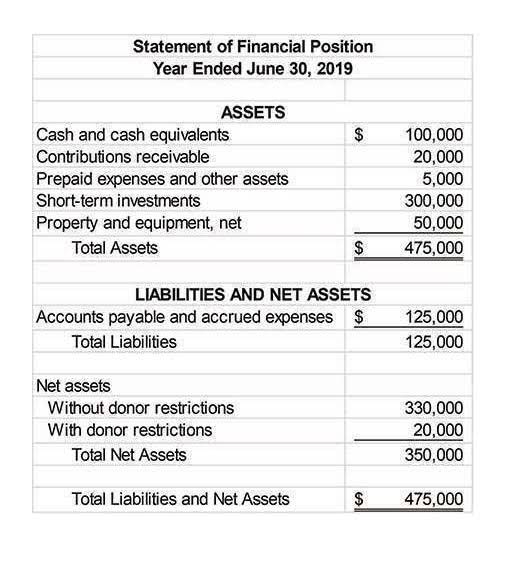
Since this asset has not been previously revalued as fully reserved, this revaluation is allowed. You Cash Flow Management for Small Businesses retire the asset in Year 5, Quarter 4, with no proceeds of sale or cost of removal. In Year 2, Quarter 1 you revalue the asset using a revaluation rate of 5%. Then in Year 4, Quarter 1 you revalue the asset again using a revaluation rate of -10%. The retirement convention, date retired, and depreciation method control how much depreciation Oracle Assets takes when you retire an asset. As an audit trail after the merge, the original cost of the invoice line remains on each line.
Step-by-Step Journal Entries

Oracle Assets does not create capitalization or reverse capitalization journal entries for CIP reverse transactions. The reason I want to use a WIP account is so my balance sheet stays accurate. I set up an account named Work in Progress, with the account type being other current asset. For example, If I buy a house for 100k, and put 50k into it, I want that 150k to show up on my balance sheet as an asset, since I own it and will recover it when I sell the property. I cannot get the projects function to work, as it deals with income and expenses. My WIP entries will not show up there since they are assets and not expenses.
- This method allows companies to manage expenses for ongoing projects, keeping finances organized until completion.
- Just setting up books for the first time in QB and need to be able to report WIP to accountants.
- The company may borrow the money from the bank but only a certain percentage is used for the construction.
- By taking all of these factors into consideration, it is possible to develop a clear picture of the true cost of a contract and ensure that it represents good value for money.
- For example, Auto Parts Store builds an extra storage facility for its inventory.
How to Record Construction-In-Progress Charges?
- Cross-functional coordination between accounting, procurement, and project management teams further strengthens your control environment.
- There is no need to restate the prior periods when there is a change in estimate.
- After the project is complete and the cost has been moved to the appropriate fixed asset account, you would start depreciating the asset over its useful life.
- By following these journal entries, BuildCo Inc. can accurately recognize revenue for the long-term construction contract, ensuring compliance with ASC 606.
- The percentage of completion method is an accounting technique used to recognize revenue and expenses proportionally as the work progresses on a long-term project.
- In Year 2, Quarter 2, you transfer the asset from cost center 100 to cost center 200 in the current period.
- Construction-in-progress accounting serves as a cornerstone of financial transparency, enabling companies to maintain accurate records, bolster investor confidence, and adhere to regulatory requirements.
The bank charge interest from the date of loan disbursement, but the construction may start on a different date. A “Work In Progress” report (or WIP Accounting) is the tool that allows contractors to see at a glance exactly where they are financially on each individual job they are involved in. When accurate numbers are readily available, fewer mistakes are made and they immediately become more profitable.
Example 3: Long-term Construction Contract
By following these journal entries, BuildCo Inc. can accurately recognize revenue for the long-term construction contract, ensuring compliance with ASC 606. BuildCo Inc. recognizes revenue over time based on the cost-to-cost method, which compares the costs incurred to date with the total estimated costs to complete the project. NetAsset leverages out-of-the-box records and reports, which you can customize and configure to your liking. You have specific asset management requirements such as tracking rentable square footage or insurance requirements? You can then add and report on any fields that would help you meet your reporting and asset management needs.
This adjustment reclassifies costs for eliminated project elements as current expenses, maintaining CIP accuracy. This entry records the liability for materials purchased while allocating the cost directly to the appropriate CIP account. The other side of the transaction will impact the cash or accounts payable balance. It will depend on the nature of purchase that which company has with the suppliers. Build to use can be an extension in an existing office facility, building a new plant, warehouse, or any business asset. The accounting treatment for the ‘build to use’ CIP is not much complicated.

CIP is a temporary classification, signifying that the asset is not yet complete or ready for its intended use. Construction in Progress (CIP) is an accounting concept for organizations undertaking building or development initiatives. It provides a structured way to track financial outlays during the creation of long-term assets. Through CIP accounting, businesses can accurately represent the evolving value of assets under construction within their financial statements. This approach ensures transparency and proper financial oversight for projects that span extended periods.

When the completed asset is placed into service, the project’s accumulated costs will be removed from the Construction Work-in-Progress account and will be debited to the appropriate plant asset account. Planyard streamlines CIP accounting by making it easier to stay organized, reduce manual errors, and keep each project’s financial status clear. It simplifies tracking so you can confidently manage budgets and ensure https://cokhitt.com/how-much-property-management-costs-a/ accurate, reliable financial records — all while focusing on successful project delivery. Assume a construction company is contracted to build a building for ₹2,000,000. Below are the journal entries for various stages of the construction project. Preventing overlooked costs and other discrepancies begins with diligent cost tracking.
These features help businesses stay on top of their financials and maintain profitability throughout the project lifecycle. For example, if a company is constructing a new office building, cip journal entry all related costs—such as architectural fees, materials, and labor—are recorded under the CIP account. Once the building is finished, the total cost is transferred to the “Buildings” account, where it begins to depreciate. The journal entry is debiting fixed assets $ 5,250 and credit interest expense $ 5,250.
Summary of Entries

By maintaining a dedicated CIP account, businesses can avoid mixing incomplete project costs with operational expenses, ensuring accurate financial reporting. This separation also allows project managers and stakeholders to monitor progress and spending in real-time, making adjustments as necessary to avoid cost overruns. Oracle Assets also changes the depreciation expense account to the default depreciation expense account for the new category, but does not adjust for prior period expense. Recording Construction in Progress involves specific accounting procedures. As expenditures are made for the construction project, they are not immediately treated as expenses that reduce current income.
